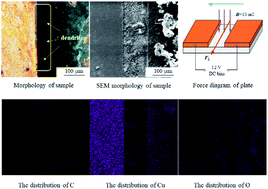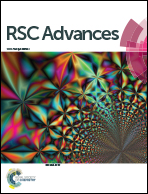Electrochemical migration behavior of moldy printed circuit boards in a 10 mT magnetic field
Abstract
In the electrochemical migration behavior (ECM) of printed circuit boards containing mold under a static magnetic field (SMF), the role of the field perpendicular to the electrodes is discussed; the B field inhibits the growth and metabolism of mold, while controlling electrochemical diffusion and nucleation. The field indirectly affects the function of mold as a transmission bridge between two electrodes. In this work, the water drop test was used to simulate the adhesion and growth of mold on the circuit board in a humid and hot environment; confocal laser scanning microscopy, scanning electron microscopy, energy dispersive spectroscopy, Raman spectra, and a scanning Kelvin probe were used to analyze the mechanism of static magnetic field and mold on the electrochemical migration.



 Please wait while we load your content...
Please wait while we load your content...